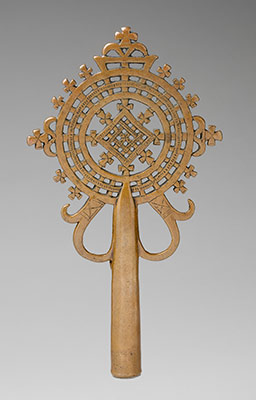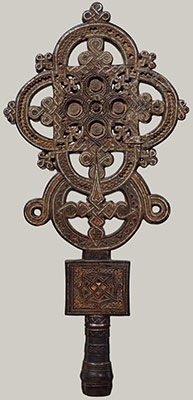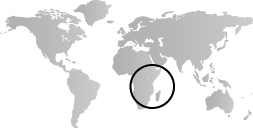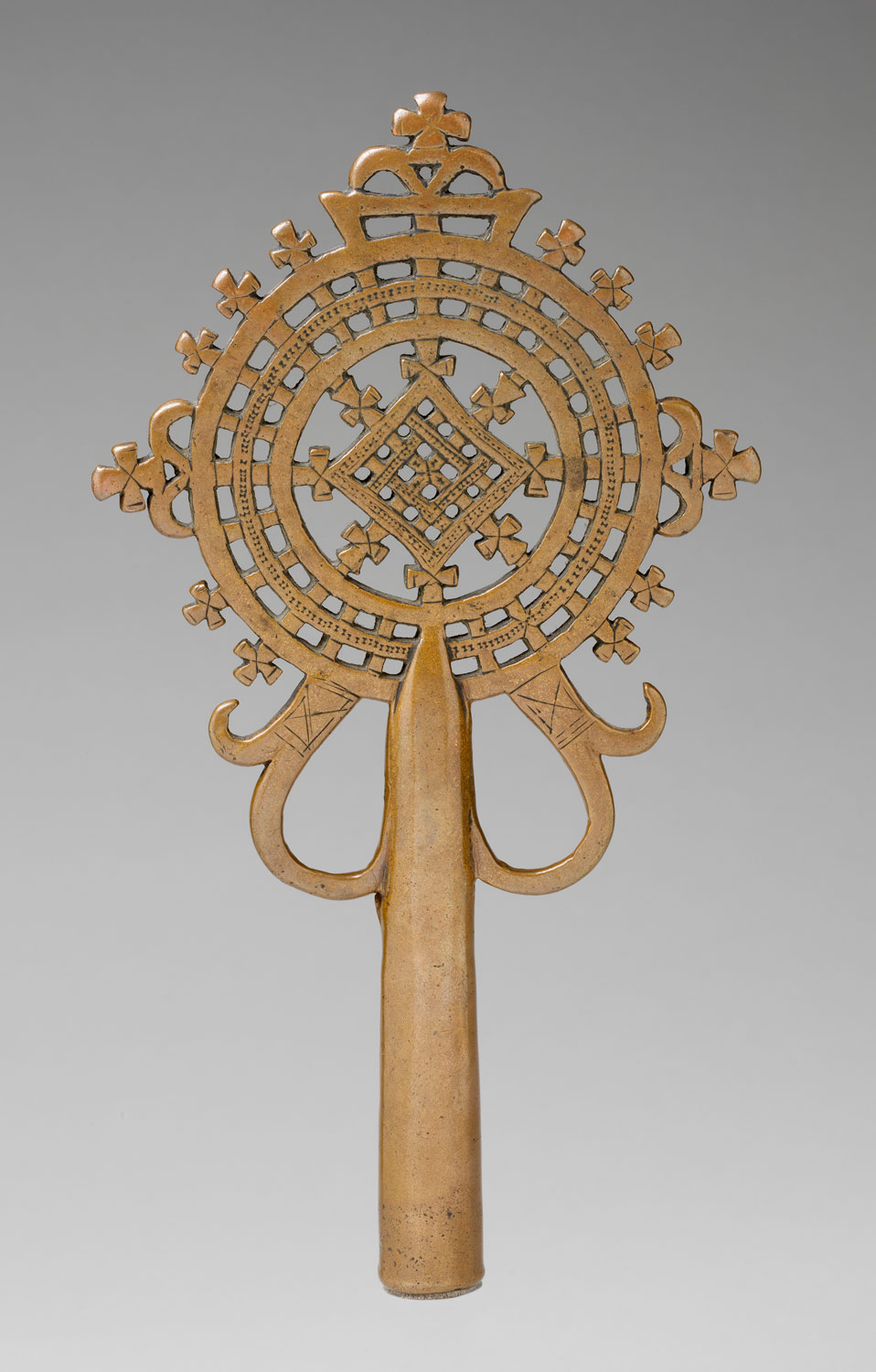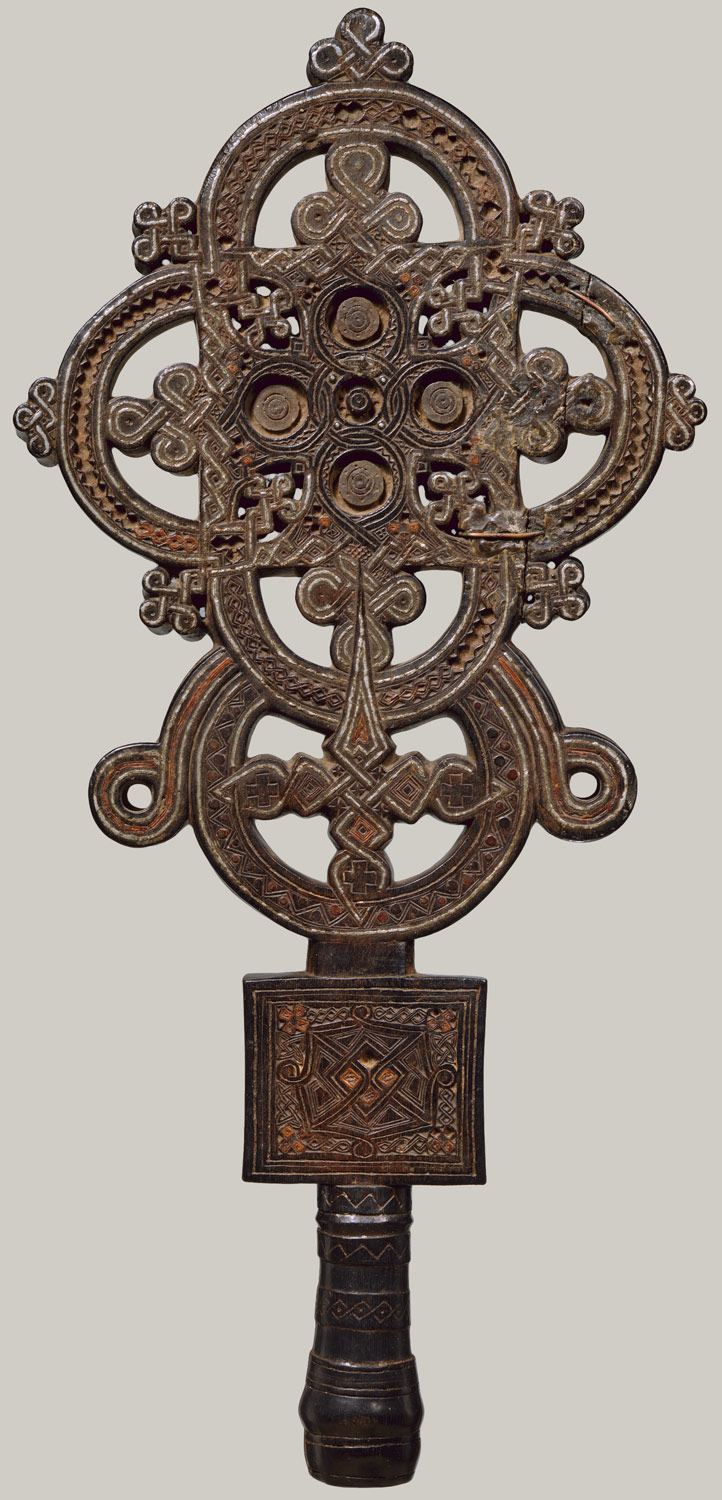This large region is primarily rural and agricultural with several large coastal cities populated predominantly by Arabic traders. Elaborate mosques and palaces reflect the Islamic influence in the use of barrel vaulting and ornate decorative motifs on doors and windows. In the area that is now Zimbabwe, traditions of monumental stone architecture initiated by the Great Zimbabwe culture continue on a smaller scale. Beginning in the ninth century, trade networks link East Africa to Asia and the Middle East. This period is marked by first encounters with Europeans, primarily Portuguese traders, and subsequent struggles for control over the Indian Ocean trade networks. One site of this confrontation is the region south of the Zambezi River in present-day Mozambique and eastern Zimbabwe, where routes carrying precious metals and ivory to the coast are dominated by the emergent Mutapa state in the 1500s. In Ethiopia, the Early Solomonic period is one of intense scholarly and artistic production, including manuscripts, architecture, and panel paintings for the Orthodox Christian Church.
Eastern and Southern Africa, 1400–1600 A.D.
Timeline
1400 A.D.
1450 A.D.
1450 A.D.
1500 A.D.
1500 A.D.
1550 A.D.
1550 A.D.
1600 A.D.
Overview
Key Events
-
300 B.C.–16th century A.D.
The Bantu migration from the Cameroon-Gabon area to the coasts of East and South Africa concludes. Among other things, Bantu-speaking peoples introduce iron technology to the region.
-
1270–1530
The Early Solomonic period in Ethiopia is one of increased prosperity due to both political stability and Ethiopia’s central location along several pivotal trade routes crossing sub-Saharan Africa and extending into Asia. The centralized monarchical leadership commissions the construction of lavishly decorated and painted rock-hewn royal churches, importing artisans and materials from around the world. Monasteries, attended by Ethiopia’s nobility, are established as centers of artistic and scholarly learning and production.
-
13th–16th century
The rise of the prosperous coastal towns of Mombasa, Malindi, and Kilwa (in present-day Mozambique, Tanzania, and Kenya) is the result of Islamic immigration from the northwest and the establishment of trading networks across the Indian Ocean. Gold, slaves, and ivory are traded for cloth, beads, metal goods, silks, and porcelain. Arabic colonies, of the type established at Gedi (near Malindi) on the Kenya coast from the fourteenth to the sixteenth century, often include a palace, several mosques, and tall stone houses for nobility. Construction is usually completed in coral slag, with stone reserved for the ornate detailing around doors and windows.
-
1434–1468
Emperor Zar’a Ya‘eqob of Ethiopia mandates the reading of the Miracles of the Virgin Mary, thus establishing Mary as a primary visual and liturgical icon in the Ethiopian practice of Christianity. The court painter Fre Seyon (active ca. 1445–80) gives visual expression to Emperor Zar’a Ya‘eqob’s sacred poetry about the Virgin, reflecting the emperor’s interpretation of her as a sensitive and forgiving mother.
-
1488
The first Portuguese explorers land in South Africa, stopping to restock water and food and to repair their ships, setting a precedent that will continue for the next 150 years. In the sixteenth and seventeenth centuries, as more traders take the southern route from Europe to India, the colony of Cape Town is established as an important stopover along what is often more than a year-long voyage.
-
1498
The Portuguese reach the Swahili coast, finding an established, sophisticated network of intercontinental commerce as well as several sizable prosperous cities.
-
1505–1650
With the support of Portuguese royalty and under the auspices of a Christian brigade against Islam, the Portuguese establish military forts from which they attack and destroy several large cities—including Kilwa (Tanzania) and Mombasa (Kenya)—and attempt to dominate the Indian Ocean trade. Revolts among the local populations in Mozambique and Kenya meet with differing levels of success. Additionally, important military alliances against the Portuguese are established between Islamic traders. Apart from the introduction of several food products, including cassava, maize, and the tomato, the Portuguese have a minimal impact on the cultures of eastern and southern Africa.
-
1526–1543
Islamic jihads against Christian Ethiopians by the neighboring kingdom of Adal destroy many of Ethiopia’s churches, libraries, and monasteries, causing the loss of centuries of invaluable records.
-
1593
The Portuguese build Fort Jesus at the entrance to Mombasa harbor, allowing them to sack and plunder the city, destroying much of the Islamic architecture.
-
16th century–ca. 1650
The Torwa state (also called Butwa), which appears to be an outgrowth of the Great Zimbabwe culture, continues the region’s tradition of monumental stone architecture. Mortarless walls composed of shaped and fitted stones are found at sites in Matendere, Khami, and Danangombe.
-
16th–17th century
The Mutapa state, located south of the Zambezi River in present-day Mozambique and Zimbabwe, emerges as an important regional power controlling trade routes from the interior of southern central Africa to the coast. Gold, silver, and ivory, as well as locally produced cloth, are exchanged at the coast for silks, ceramics, and other goods of foreign origin.
Citation
“Eastern and Southern Africa, 1400–1600 A.D.” In Heilbrunn Timeline of Art History. New York: The Metropolitan Museum of Art, 2000–. http://www.metmuseum.org/toah/ht/?period=08®ion=afa (October 2002)
